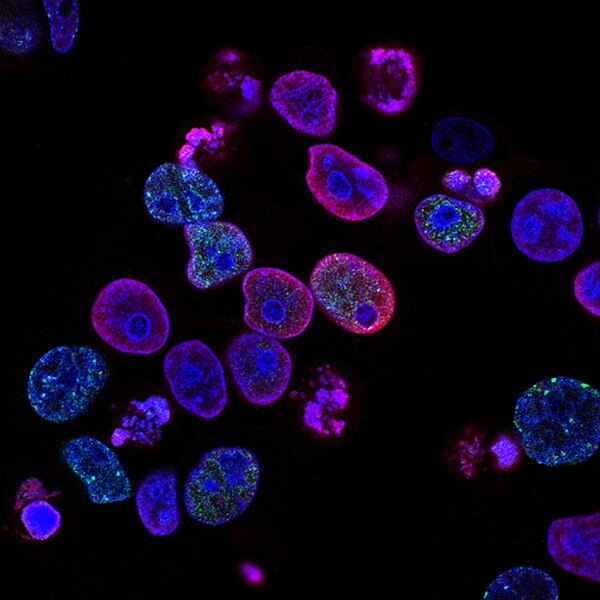Every night, as the world dims and the last flickers of sunlight fade from the sky, something remarkable happens. The bustle slows. Thoughts begin to blur. The eyelids grow heavy. And eventually, consciousness slips away—not into death, but into something just as mysterious and essential: sleep.
We spend nearly one-third of our lives doing it. We fight it. We long for it. We underestimate it. Yet without it, we cannot function, we cannot heal, and ultimately, we cannot survive.
Sleep is not just the absence of wakefulness. It is not a passive shutdown. It is an active, dynamic, and vital process—a cycle of electrical storms, chemical symphonies, and cellular regeneration that affects every single aspect of our lives. Our memories, emotions, immunity, metabolism, creativity, and even morality are all sculpted in the dark by the unseen hand of sleep.
But for all its importance, sleep remains one of the most fascinating and least understood frontiers in science. Why do we sleep? What exactly happens when we do? And how is it possible that something so quiet and still could be so powerful?
To answer these questions, we must descend into the intricate architecture of sleep itself, where biology, psychology, and neuroscience converge in one of nature’s most beautiful designs.
The Biology Behind the Yawn
At the core of sleep is a delicate orchestration of hormones, brain regions, and biological rhythms that govern our days and nights. Chief among these players is the circadian rhythm—a 24-hour internal clock that regulates our sleep-wake cycles. This rhythm is synchronized with the external world by light, especially sunlight, which signals to the brain when to wake up and when to wind down.
The suprachiasmatic nucleus, a tiny region in the hypothalamus just above the optic nerves, acts as the master clock. When light hits the retina, it sends signals to this brain region, which in turn regulates the release of hormones like melatonin—the chemical messenger that signals to the body that it’s time to sleep.
As evening approaches and darkness falls, melatonin production increases, lowering our core body temperature and preparing us for rest. At the same time, adenosine, a byproduct of energy consumption in the brain, builds up throughout the day. This molecule is one of the primary drivers of sleep pressure—the physical sensation of tiredness. The longer we stay awake, the more adenosine accumulates, pushing us toward sleep like a rising tide.
When we finally close our eyes and drift off, the body doesn’t simply idle. It transitions through a series of stages, each with distinct brainwave patterns and physiological processes. Together, these stages form the architecture of sleep—a cycle we repeat several times each night, like a song with multiple movements.
The Architecture of Sleep
Sleep is composed of two major types: non-REM (NREM) sleep and REM (rapid eye movement) sleep. Each plays a unique role, and both are critical for mental and physical health.
The night begins with NREM sleep, which itself has three progressively deeper stages. The first is a light slumber, where brainwaves slow and muscles begin to relax. The second stage brings a further drop in heart rate and temperature, as well as the appearance of special brainwave patterns called sleep spindles and K-complexes—thought to be involved in memory consolidation and sensory filtering.
The third stage, known as slow-wave sleep or deep sleep, is where the magic of physical restoration occurs. During this time, growth hormone is released, tissues are repaired, and the immune system is strengthened. The brain produces long, slow delta waves—synchronized pulses that sweep across the cortex like waves on a quiet sea.
Then, the sleeper ascends back through the lighter stages into REM sleep—a paradoxical state where the brain becomes active again, resembling wakefulness, but the body is effectively paralyzed. This is the stage where most vivid dreaming occurs. The eyes dart beneath closed lids, the breathing becomes irregular, and the mind is alight with strange narratives and surreal experiences.
REM sleep plays a critical role in emotional regulation, memory integration, and creative problem-solving. It is the brain’s way of filing, sorting, and reimagining the events of the day. During REM, the brain replays memories, weaves them into existing knowledge, and even reprocesses painful experiences to make them less emotionally charged by morning.
Each sleep cycle lasts about 90 minutes, with more deep sleep in the early part of the night and longer REM periods in the early morning hours. Disruptions to this natural rhythm—whether from stress, screens, travel, or sleep disorders—can lead to significant cognitive, emotional, and physical consequences.
Why Sleep Deprivation Hurts
It’s easy to think of sleep as expendable. Many wear their sleeplessness like a badge of honor, proud of how much they can achieve with so little rest. But science tells a very different story.
Sleep deprivation, even in modest doses, wreaks havoc on the body and mind. After just one night of poor sleep, attention, concentration, and decision-making suffer. Emotional regulation falters, and the brain becomes more reactive to negative stimuli. Memory declines, and creativity plummets. Chronic sleep deprivation increases the risk of depression, anxiety, obesity, diabetes, heart disease, and even certain forms of cancer.
At the neurological level, sleep loss impairs the prefrontal cortex—the brain’s center for logic and self-control—while amplifying the activity of the amygdala, the emotional alarm system. This imbalance explains why we become more irritable, impulsive, and irrational when we’re tired. We literally lose access to our better judgment.
On a cellular level, the consequences are just as dire. During deep sleep, the brain flushes out toxic waste products—like beta-amyloid, a protein linked to Alzheimer’s disease—through a specialized system called the glymphatic system. When sleep is cut short, this detox doesn’t happen. Over time, the buildup of waste can lead to neurodegeneration.
Sleep is not a luxury. It is a biological necessity—one that sustains every aspect of who we are.
Dreams, Memory, and the Sleeping Brain
One of sleep’s most enigmatic and poetic aspects is dreaming. For millennia, humans have looked to dreams for prophecy, meaning, and insight. Modern neuroscience hasn’t entirely stripped dreams of their mystery, but it has begun to explain why they happen.
During REM sleep, the brain reactivates recent memories, often blending them with older experiences and emotions. This process helps consolidate what we’ve learned, link it with existing knowledge, and distill it into insight.
Studies have shown that people who dream about a learning task—like navigating a maze or studying a language—perform better the next day. Dreams also allow the brain to simulate social scenarios, confront fears, and rehearse possible futures. They are, in a sense, the mind’s virtual reality lab—offering safe space to process emotions and test ideas.
And yet, not all dreams are healing. Nightmares, night terrors, and lucid dreams point to the complexity of the dreaming mind. Trauma, anxiety, and unresolved emotions can all influence dream content, making sleep a battleground as much as a sanctuary. For some, dreams are fragmented, restless, and elusive. For others, they are vivid journeys that help bring coherence to the chaos of waking life.
Either way, dreaming appears to be a critical function—not an evolutionary accident, but a deeply ingrained part of our nightly restoration.
Sleep and the Developing Brain
In children and adolescents, sleep is even more crucial. Infants spend up to 16 hours a day sleeping, with a large portion in REM. This is no accident—during this stage, the brain is forming trillions of connections, pruning unnecessary ones, and building the foundation for cognition, language, and emotional intelligence.
Teenagers, too, have unique sleep needs. Their circadian rhythms naturally shift later, making them more inclined to stay up and sleep in. Unfortunately, early school start times often cut sleep short, leading to chronic deprivation during a critical period of brain development.
Sleep in adolescence is tightly linked to mood regulation, academic performance, and risk behavior. Lack of sleep in teenagers has been associated with increased rates of depression, anxiety, substance abuse, and even car accidents. Simply adjusting school schedules to align with natural sleep cycles has been shown to improve grades, behavior, and emotional resilience.
The growing brain is especially vulnerable to sleep loss—but also especially responsive to sleep recovery. A good night’s sleep during childhood is not just restorative. It’s developmental.
Aging, Sleep, and Memory
As we grow older, sleep changes. Older adults often experience lighter sleep, more awakenings, and less time in deep and REM sleep. These changes are natural, but they can also contribute to cognitive decline if not managed.
One of the earliest symptoms of Alzheimer’s disease, for instance, is disturbed sleep. And recent studies suggest that sleep disruption may not just be a symptom of cognitive decline, but a contributing factor. The link between poor sleep and memory loss is increasingly seen as a two-way street: less sleep leads to more brain waste, which in turn worsens sleep quality.
Maintaining healthy sleep habits—regular schedules, limited alcohol and caffeine, exposure to natural light—can help mitigate age-related sleep changes. Even more importantly, they may help protect against age-related cognitive decline.
Sleep, at every stage of life, is not just about rest. It is about preservation—of memory, identity, and vitality.
The Science of Better Sleep
Despite its importance, good sleep can feel elusive. Insomnia, sleep apnea, restless leg syndrome, and circadian rhythm disorders affect millions of people worldwide. Modern life—with its bright screens, round-the-clock schedules, and constant stimulation—has made it harder than ever to sleep well.
But science offers hope. Cognitive Behavioral Therapy for Insomnia (CBT-I) has emerged as one of the most effective treatments for chronic sleep issues, often outperforming medication in the long run. It helps people change unhelpful beliefs and behaviors around sleep, restoring natural rhythms without relying on pills.
Other approaches—like mindfulness meditation, light therapy, and sleep hygiene education—can also be profoundly helpful. The key is understanding that sleep is not a switch to be flipped, but a cycle to be honored.
And honoring it starts with knowledge—with knowing that sleep is not optional, not indulgent, not wasted time. It is where healing begins.
Sleep: Our Oldest, Wisest Teacher
In a world obsessed with doing, sleep reminds us that not doing is also an act of power. It is in sleep that the body heals, the mind resets, and the soul finds silence. It is where we remember who we are, and where we prepare to become something more.
The science of sleep is still unfolding. New discoveries emerge every year, revealing how deeply sleep is woven into the fabric of life. But the wisdom of sleep is ancient. Every living creature—from fruit flies to whales—sleeps. Every culture has lullabies. Every heart, no matter how restless, eventually surrenders to the dark.
Sleep is not a weakness. It is not a delay. It is one of nature’s greatest gifts—an alchemy that transforms exhaustion into clarity, stress into resilience, and dreams into reality.
When we embrace it, we don’t just wake up. We rise.






